
Schrödinger’s Cat and the Qbit
/
27 Comments
The concept of quantum superposition (or superposition for short) is very counterintuitive, as Schr##\ddot{\text{o}}##dinger noted in 1935 writing [1],…

The Slinky Drop Experiment Analysed
The slinky drop is a rather simple experiment. In its most basic form, it requires only a popular toy for children, a stable hand, and a keen eye.…
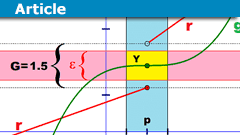
Epsilontic – Limits and Continuity
Abstract
I remember that I had some difficulties moving from school mathematics to university mathematics. From what I read on PF through the years, I…

The Poor Man’s Milli-Ohm Meter
Introduction
In a previous article on measuring battery internal resistance, a simple technique for low-resistance measurement was outlined. In this article,…
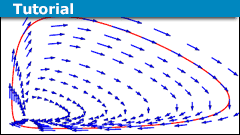
Differential Equation Systems and Nature
Abstract
"Mathematics is the native language of nature." is a phrase that is often used when it comes to explaining why mathematics is all around in natural…

How Quantum Information Theory Solves “the only mystery” of Quantum Mechanics
In Chapter 37 of "The Feynman Lectures on Physics Volume 1," Richard Feynman famously wrote that the mystery of wave-particle duality in the double-slit…

Opinion: When Pro Scientists Explain Using Pop Science
Abstract
There is so much to say about the many endeavors by professional scientists to explain to us the world. The list is long: Carl Sagan, Harald…

Why There Are Maximum Mass Limits for Compact Objects
In this article, we will look at why there are maximum mass limits for objects that are supported against gravity by degeneracy pressure instead of kinetic…
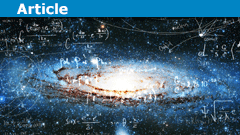
Oppenheimer-Snyder Model of Gravitational Collapse: Implications
Part 1: OverviewPart 2: Mathematical DetailsPart 3: ImplicationsIn the last article in this series, we finished up with a metric for the Oppenheimer-Snyder…
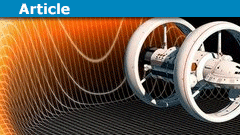
What Are Tensors and Why Are They Used in Relativity?
If you try learning general relativity, and sometimes special relativity, on your own, you will undoubtedly run into tensors. This article will outline…

Oppenheimer-Snyder Model of Gravitational Collapse: Mathematical Details
Part 1: OverviewPart 2: Mathematical DetailsPart 3: ImplicationsIn a previous article, I described in general terms the model of gravitational…
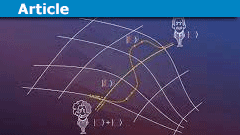
When Discussing the Twin Paradox: Read This First
This article is intended for anyone who wants to start a thread here at Physics Forums on the twin paradox. There are already many, many threads here on…

The Oppenheimer-Snyder Model of Gravitational Collapse: An Overview
Part 1: OverviewPart 2: Mathematical DetailsPart 3: ImplicationsMost people who have spent any time at all studying GR are familiar with the…
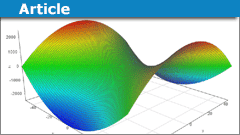
Yardsticks to Metric Tensor Fields
I asked myself why different scientists understand the same thing seemingly differently, especially the concept of a metric tensor. If we ask a topologist,…

Quantum Computing for Beginners
Introduction to Quantum Computing
This introduction to quantum computing is intended for everyone and especially those who have no knowledge of this relatively…
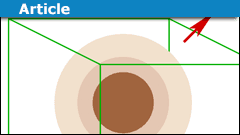
A Physics Misconception with Gauss’ Law
Introduction
It is relatively common to see the following type of argument:
The surface area is ##A## and the enclosed charge is ##Q##. The electric…

How Can We Jump When the Ground Does No Work?
It is relatively common on Physics Forums to see arguments that are effectively similar to the following:
When we jump off the ground, the ground does…

Symmetry Arguments and the Infinite Wire with a Current
Many people reading this will be familiar with symmetry arguments related to the use of Gauss law. Finding the electric field around a spherically symmetric…

Superdeterminism and the Mermin Device
Superdeterminism as a way to resolve the mystery of quantum entanglement is generally not taken seriously in the foundations community, as explained in…
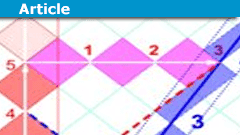
Relativity on Rotated Graph Paper (a graphical motivation)
(based on https://www.physicsforums.com/threads/teaching-sr-without-simultaneity.1011051/post-6588952 and https://physics.stackexchange.com/a/689291/148184…
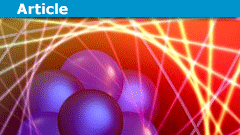
Quantum Physics via Quantum Tomography: A New Approach to Quantum Mechanics
This Insight article presents the main features of a conceptual foundation of quantum physics with the same characteristic features as classical physics…

How Quantum Information Theorists Revealed the Relativity Principle at the Foundation of Quantum Mechanics
This Insight is a condensed version of No Preferred Reference Frame at the Foundation of Quantum Mechanics. Reference numbers here correspond to that paper.…

Quantum Mechanics and the Famous Double-slit Experiment
Key PointsQuantum mechanics is known for its strangeness, including phenomena like wave-particle duality, which allows particles to behave like waves.
…

When Science is Not Enough: Legal and Health Implications of Questions
There are often questions on Physics Forums related to building machines or structures that are left unanswered because of this guideline (found in the…
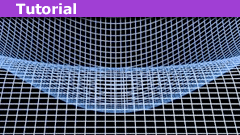
Tolman Law in a Nutshell
The Tolman law describes how the temperature in a fixed gravitational field depends on the position (see https://arxiv.org/abs/1803.04106 for a pedagogic…

Posterior Predictive Distributions in Bayesian Statistics
Confessions of a moderate Bayesian, part 4
Bayesian statistics by and for non-statisticiansRead part 1: How to Get Started with Bayesian StatisticsRead…

Introduction to Electric Vector Potential and Its Applications
Main Point: The electric vector potential offers a means of determining the non-conservative component of mixed stationary or quasi-stationary electric…

I Know the Math Says so, but Is It Really True?
I'm sure anyone who has hung out long enough here on Physics Forums has encountered threads that go something like this (I'll use an example based on threads…

Does the Block Universe of Physics Mean Time is an Illusion?
I have written many Insights (and coauthored an entire book) explaining how the puzzles, problems, and paradoxes of modern physics can be attributed to…

Introduction to Pitot-Static Systems in Gliders
Like many others, I have been seeking new and fun things to do during a pandemic. I decided on the new Microsoft Flight Simulator 2020, but the Condor…

Why Bother Teaching Mechanical Energy Conservation?
Note: It is assumed that the reader has read part I and part II of the series.Is Mechanical Energy Conservation Free of Ambiguity?
Can We Do Better…
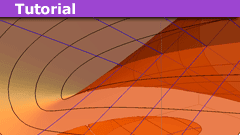
Intro to Centrifugal Force Reversal in Kerr Spacetime
In this article, we will analyze "centrifugal force reversal" in Kerr spacetime, similar to what was done for Schwarzschild spacetime in a previous Insights…

A Principle Explanation of the “Mysteries” of Modern Physics
All undergraduate physics majors are shown how the counterintuitive aspects ("mysteries") of time dilation and length contraction in special relativity…
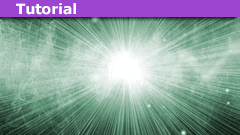
Exploring the Anatomy of Compton Scattering
Introduction
In this article we take as our starting point the original equations which Compton drew up and solved in his ground-breaking 1925 article: From…

Learning the Twin Paradox for Freely-falling Observers
The "twin paradox" is often discussed in the introductory treatment of special relativity. Under "twin paradox" we understand the fact that if two twins…
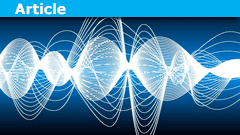
Are Electromagnetic Waves Always Transverse?
In this insight, we shall endeavor in the realm of classical electrodynamics and examine whether EM waves are always transverse. We shall make use of Jefimenko's…

Is Pressure A Source Of Gravity?
In a previous series of articles, I posed the question "Does Gravity Gravitate?" and explained how, depending on how you interpreted the terms "gravity"…
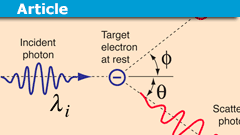
Massive Meets Massless: Compton Scattering Revisited
Introduction
In a previous article entitled "Alternate Approach to 2D Collisions" we analyzed collisions between a moving and stationary object by defining…

Is Science an Authority? How to View Announcements from Scientists
In a previous article, I discussed why scientists (among others) are almost never interested in considering a new theory proposed by a non-scientist: because…

Dark Energy Part 3: Fitting the SCP Union 2.1 Supernova Data
In Part 1 of this 3-part series, I explained kinematics in Einstien-deSitter (EdS) cosmology and in Part 2, I explained kinematics in ##\Lambda##CDM cosmology…

Dark Energy Part 2: LCDM Cosmology
This is Part 2 of a 3-part series explaining evidence for so-called “dark energy” leading to a current positive cosmological acceleration. The evidence…

A Beginner Physics Guide to Baryon Particles
Introduction
At the beginning of the 20th century, it was thought that all matter consisted of only three particles: the electron, the neutron, and the…

Slowly Lowering an Object in a Static, Spherically Symmetric Spacetime
In the first two articles in this series, we looked at the Einstein Field Equation and Maxwell's Equations in a static, spherically symmetric spacetime.…
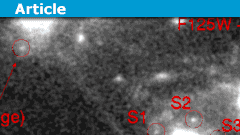
The Reappearance of Supernova (SN) Refsdal
Key Points Astronomers have been trying to understand space for thousands of years.
Supernova Refsdal was the first known multiply imaged supernova.
…

Dark Energy Part 1: Einstein-deSitter Cosmology
In this 3-part series, I want to motivate the (re)introduction of the cosmological constant ##\Lambda## into Einstein's equations of general relativity…

The Evolution of the Universe, Cosmic Web and Connections
The universe was not perfectly uniform when it started, some areas had a higher density than others. During the evolution of the universe, these areas…
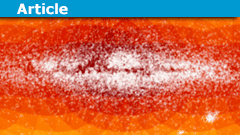
Gaia and the Race to Detect More Gravitational Waves
Gravitational waves (GW’s) are disturbances in spacetime produced by any massive object moving asymmetrically. However, only the most massive and most…
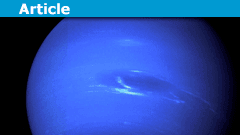
3 Possible Models For Why Uranus Spins on Its Side
Uranus spins on its side. Uranus has an obliquity (tilt) of 98º, making its axis of rotation closer to the ecliptic plane than any other planet. It is…
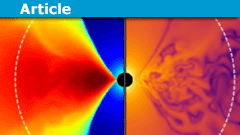
Black Holes Are Not Empty Voids. A Black Hole at the Heart!
Key PointsBlack Holes (BH’s) have a gravitational pull so strong that nothing, not even light, can escape it
BH’s can be divided into two…

Can We Do Better Than Mechanical Energy Conservation?
Note: It is assumed that the reader has read part I of the series.
Introduction
The ambiguity and flaws discussed in part I can be resolved using the…

Is Mechanical Energy Conservation Free of Ambiguity?
Introduction
"Close to any question that is in the textbook, there is another question that has never been answered that is interesting."
[Stephen Wolfram,…

Accurate Fluid Dynamics By Video Analysis
IntroductionProviding accurate fluid dynamics experiments for undergraduate laboratories is challenging in several ways, including reproducibility,…

Learn the Fundamentals of the Diffraction Grating Spectrometer
Introduction
In this article we will discuss the fundamentals of the diffraction grating spectrometer. The operation of the instrument is based upon…

Intro to the Ionization Energy of Atomic Hydrogen
Introduction
In previous articles relating to various transition energies in Hydrogen, Helium and Deuterium we have employed the following formula for…

Answering Mermin’s Challenge with the Relativity Principle
Note: This Insight was previously titled, "Answering Mermin's Challenge with Wilczek's Challenge." While that version of this Insight did not involve any…

Exploring Bell States and Conservation of Spin Angular Momentum
In a recent thread, I outlined how to compute the correlation function for the Bell basis states\begin{equation}\begin{split}|\psi_-\rangle &=…
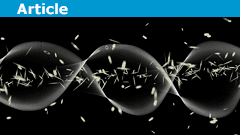
Modern Physics Understood as an Unrecognized Kuhnian Revolution
People often claim on Physics Forums and in the foundations community proper that quantum mechanics is "incomplete." Indeed, Lee Smolin recently wrote…

Relativistic Treatment of the DC Conducting Straight Wire
Introduction
The direct-current-conducting infinitely long wire is often discussed in the context of relativistic electrodynamics. It is of course a completely…
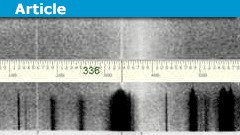
Revisiting The Deuterium Lyman Alpha Line Experiment
Introduction
In this article, we will be revisiting a somewhat understudied (and seemingly unrepeated) experiment to measure the Deuterium Lyman Alpha…

Signature of the Sun: Analyzing the Solar Balmer Series Lines
Introduction
We are in many ways a fortunate generation having so many wonderful tools at our disposal on account of the "silicon revolution". The advent…
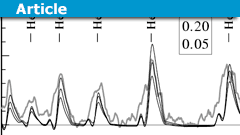
Understanding Bohr’s Helium Lines
Introduction
In a previous article "Calculating the Balmer Alpha Line" we mentioned how accurate predictions of the spectral lines of singly ionized Helium…

How to Zip Through a Rotating Tunnel Without Bumping Into the Walls
Preface
While browsing through unanswered posts in the Classical Physics Workshop, I came across a gem at the link shown below. For the reader's convenience,…
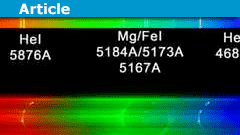
Calculating the Balmer Alpha Line: Atomic Hydrogen
Introduction
Most readers acquainted with the hydrogen spectrum will be familiar with the set of lines in the visible spectrum representing transitions…

Maxwell’s Equations in a Static, Spherically Symmetric Spacetime
In the first article in this series, we looked at the Einstein Field Equations in a static, spherically symmetric spacetime. In this article, we are going…

Understanding Superposition Physically and Mathematically
What is superposition
Superposition is a fundamental concept in physics and mathematics, particularly in the field of wave theory and quantum mechanics.…

What Thermodynamics and Entropy Means
Introduction
The student of thermodynamics, as they consider pistons and ideal gasses and such, often begin to grasp the nature of entropy only to find…

The Einstein Field Equation in a Static, Spherically Symmetric Spacetime
This will be the first of several articles which will provide, for reference, useful equations for static, spherically symmetric spacetimes. This is a…
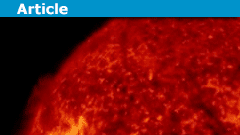
Equations of State for Photon Gas and Relativistic Electron Gas
This Insight develops equations of state that are useful in calculations about cosmology and about the insides of stars. The first calculation is for a…
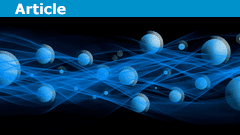
The 7 Basic Rules of Quantum Mechanics
For reference purposes and to help focus discussions on Physics Forums in interpretation questions on the real issues, there is a need for fixing the common…

Clarifying Common Issues with Indistinguishable Particles
Commonly there is a lot of imprecision in talking about ''indistinguishable'' (or ''identical'') particles, even in serious work. This Insight article…

When Renewable Energy Meets Power Grid Operations
The electric power industry faces much turmoil in the coming decades. The business model of the electric utility company (public or private) may not…

How to Create a Universe – Instructions for an Apprentice God
(-: ##~~~## A fantasy to be read at leisure time ##~~~## :-)
Written October 7, 1999 to relax from the strains of working on a new interpretation of quantum…

A Classical View of the Qubit
This Insight article is part of my paper Foundations of quantum physics III. Measurement, featuring the thermal interpretation of quantum physics. See…

9 Reasons Quantum Mechanics is Incomplete
I argue that all interpretations of quantum mechanics (QM) are incomplete, each for its own reason. I also point out that for some interpretations (those…
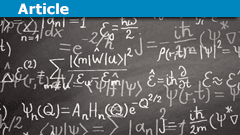
Against “interpretation”
I am against "interpretations" of Quantum Mechanics (QM) in a sense in which John Bell [1] was against measurement in QM and Travis Norsen [2] is against…

An Example of An Accurate Hooke’s Law Laboratory
Learning ObjectivesGain confidence and experimental care in making accurate measurements.
Understand the relationship between force and spring…

Demystifying the Often Misunderstood Bernoulli’s Equation
Introduction
Bernoulli's equation is one of the most useful equations in the field of fluid mechanics, owing to its simplicity and broad applicability.…
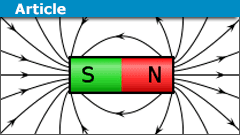
Are Magnetic Field Lines Real?
We recently had a question in the relativity forums that mentioned the behavior of magnetic field lines and reminded me of my own confusion at school about…

When Vehicle Power Dictates Acceleration
One interesting problem when dealing with a vehicle of a certain mass is to determine what is required in order to get the maximum acceleration while going…

The Quantum Mystery of Wigner’s Friend
In this Insight I will introduce the quantum mystery called ``Wigner's friend'' using Healey's version [1] of Frauchiger and Renner's (FR's) version [2]…
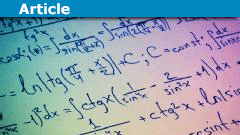
A Numerical Insight for the Fundamental Theorem of Calculus
The purpose of this article is not to provide some rigorous statement, neither a rigorous clever proof of the fundamental theorem of calculus. It is rather…

The Unreasonable Effectiveness of the Popescu-Rohrlich Correlations
In this Insight, I will show how the Popescu-Rohrlich (superquantum) correlations provide an unreasonable advantage in a particular "quantum guessing game''…
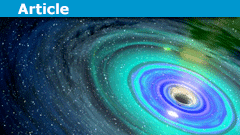
Exploring the Math in Killing Fields and Black Holes
Killing Vector Field
The Killing vector field is a vector field on a differentiable manifold that preserves the metric over spacetime (from this I assume,…

Exploring the Energies in the Large Hadron Collider
The Large Hadron Collider has produced collisions at 7 TeV. For collisions at 7 TeV, protons need to be ‘ramped’ to 3.5 TeV, the proton has a mass…

Black Holes and the Properties of In-Falling Radial Plungers
From 'Exploring Black Holes' by John Wheeler and Edwin Taylor; can apply to any object falling radially towards a static spherical mass (where the mass…

Why the Quantum | A Response to Wheeler’s 1986 Paper
Wheeler's opening statement in his 1986 paper, ``How Come the Quantum?'' holds as true today as it did then [1]
The necessity of the quantum in the construction…
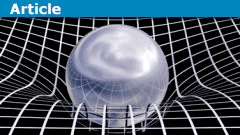
The 10 Commandments of Index Expressions and Tensor Calculus
Having more than 10 years of experience in teaching vector and tensor calculus and special and general relativity, I have noted that many people have the…

Direct Echo-Based Measurement of the Speed of Sound
Figure 1: Distance vs. time a firecracker report echoed off of a building at different distances on both a cold and a warm day.The speed of sound…
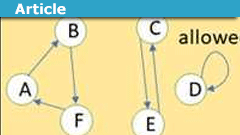
How to Better Define Information in Physics
When I ask questions about the conservation of information I frequently get the reply, “It depends on what you mean by information.” So, I researched…

Lessons From the Bizzaro Universe
The terms Bizarro and Bizarro World originated in Superman comics, where strangely imperfect versions of Superman, other action characters, and even Earth…
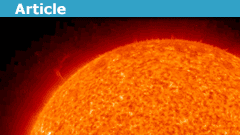
Either the Sun Is Getting Smaller or Gravity Is Getting Weaker
Paper discussion: Solar system expansion and strong equivalence principle as seen by the NASA MESSENGER mission. Antonio Genova, Erwan Mazarico, Sander…

Learn Statistical Mechanics: The Ideal Gas
Read Part 1: Equilibrium Systems
The Ideal Gas: Boltzmann's Approach (The Microcanonical Ensemble)
Consider a monatomic gas of ##N## non-interacting…

Addressing the “Classical Physics Is Wrong” Fallacy
One of the common questions or comments we get on PF is the claim that classical physics or classical mechanics (i.e. Newton's laws, etc.) is wrong because…

Learn Renormalization in Mathematical Quantum Field Theory
This is one chapter in a series on Mathematical Quantum Field TheoryThe previous chapter is: 15. Interacting quantum fields.
16. Renormalization
In…

Learn Interacting Quantum Fields in Mathematical Quantum Field Theory
This is one chapter in a series on Mathematical Quantum Field Theory.The previous chapter is 14. Free quantum fields.The next chapter is 16. Renormalization.
15.…

Learn Free Quantum Fields in Mathematical Quantum Field Theory
This is one chapter in a series on Mathematical Quantum Field TheoryThe previous chapter is 13. Quantization.The next chapter is 15. Interacting…
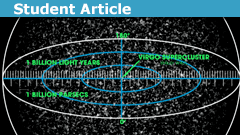
Intro to the Big Bang and Infinity Concepts
This article is part of our student writer series. The writer Arman777, is an undergraduate physics student at METUIn the cosmology section of the…

Learn About the FLRW Metric and The Friedmann Equation
This article is part of our student writer series. The writer Arman777, is an undergraduate physics student at METUPrevious Chapter: A Journey Into…

The Fundamental Difference in Interpretations of Quantum Mechanics
A topic that continually comes up in discussions of quantum mechanics is the existence of many different interpretations. Not only are there different…

Learn Quantization in Mathematical Quantum Field Theory
The following is one chapter in a series on Mathematical Quantum Field Theory.The previous chapter is 12. Gauge fixing.The next chapter is 14.…
